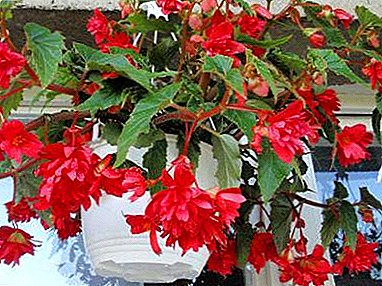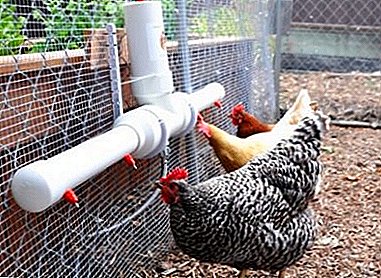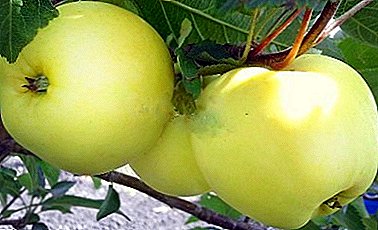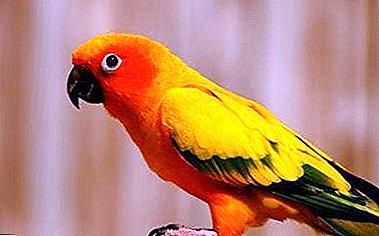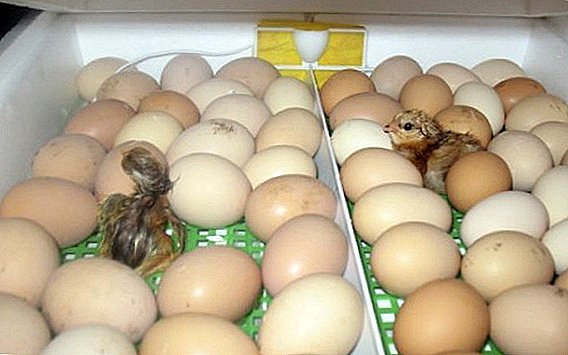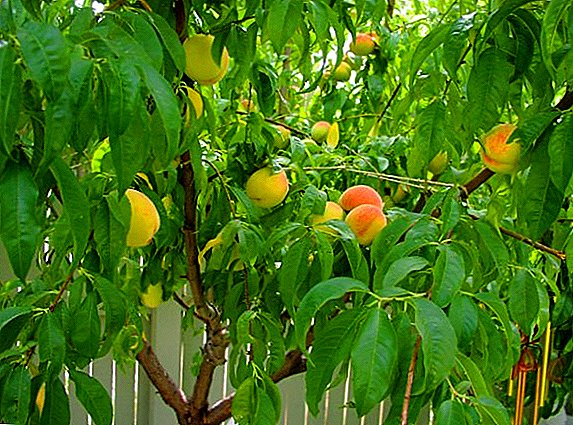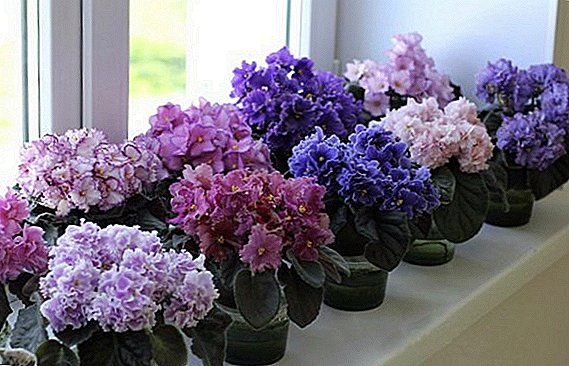 When at least one violet appears in your home, be prepared for the fact that it will be attacked by diseases and various kinds of pests. But a little running ahead, we want to say that the main way to prevent this is regular preventive measures. Therefore, acquiring a new plant, it must be held in isolation from other plants and ensure its healthy condition. Next, we will talk about the most common diseases of violets and parasites that affect them.
When at least one violet appears in your home, be prepared for the fact that it will be attacked by diseases and various kinds of pests. But a little running ahead, we want to say that the main way to prevent this is regular preventive measures. Therefore, acquiring a new plant, it must be held in isolation from other plants and ensure its healthy condition. Next, we will talk about the most common diseases of violets and parasites that affect them.
The main diseases of violets and methods for their treatment
 Diseases affecting violets can vary so much that flower growers do not always understand the cause of the death of their plants. The roots rot, flowers and leaves fade, but why? Wrong watering? Did the flower get less or more than needed sunlight? To find the answer to these questions and prevent undesirable consequences, you need to know the main diseases of violets and correctly carry out the treatment of flowers. Proper care will help you avoid these misfortunes.
Diseases affecting violets can vary so much that flower growers do not always understand the cause of the death of their plants. The roots rot, flowers and leaves fade, but why? Wrong watering? Did the flower get less or more than needed sunlight? To find the answer to these questions and prevent undesirable consequences, you need to know the main diseases of violets and correctly carry out the treatment of flowers. Proper care will help you avoid these misfortunes.
Did you know? Goethe adored violets. During his walks in the suburbs, he scattered their seeds. Soon all the surroundings of Weimar were filled with these flowers. They are still growing there, and in honor of the memory of the great classic they are called "Goethe's violets."
Fusarium
This disease causes the decay of the violet rosette. The main cause of the disease lies in the banal improper care of the plant. Thus, the fungus "Fusarium" penetrates the young roots of violet. Because of this, the further rotting of the flower begins. The stalks turn brown and fall off, and the roots become dark and can no longer hold the plant in the soil.
What not to do when caring for violets? There are several answers:
- Watering too often.
- Allow weighting of the soil in the place of growth of violets.
- Plant the plant in an overly large pot.
- Allow sudden changes in temperature in the room with violet.
- Pour over ice water.

Late blight
This disease is very dangerous and occurs due to the penetration of fungal parasites into the body of the plant. They enter the violet through the microcracks in the leaves and through the roots. As a result, the root neck begins to rot quickly. The disease makes itself felt brown spots on the leaves of plants. Fungal spores can live in the earth for a long time, so one of the stages of prevention is the complete sterilization of a flower pot. Treatment, alas, in this case will not help and the plant will have to be destroyed. As a preventive measure, it is necessary to create conditions of normal humidity in the room and fertilize senpoly with superphosphates.
Mealy dew
 If white flakes appeared on the leaves of violet, and the plant seems a bit dusty in appearance, then powdery mildew struck it. Indoor violets are particularly susceptible to this disease. White spots also affect flower stalks. Let's talk about the factors contributing to the emergence of such a disease:
If white flakes appeared on the leaves of violet, and the plant seems a bit dusty in appearance, then powdery mildew struck it. Indoor violets are particularly susceptible to this disease. White spots also affect flower stalks. Let's talk about the factors contributing to the emergence of such a disease:
- The plant does not receive enough natural sunlight.
- Room humidity exceeds 60%.
- The air is too cold.
- Dustiness and pollution of the plant itself and the pot in which it is located.
- Soil with a lack of phosphorus and potassium, but with an excess of nitrogen.
- Floral leaves should be wiped occasionally with a damp cloth.
- The room must be clean and well ventilated.
Important! Such care is necessary not only in cases when Saintpaulia appeared in your home. Plant diseases act as a kind of anxiety indicator that the surrounding room environment is harmful to residents. This is especially true of children.
 If you still have a white blotch on your violets, you need to know about the methods of treatment. In fact, everything is quite simple. It should be once sprayed with a flower with a bonat or a foundation. The effect of treatment may not be immediately visible - sometimes you have to wait. After a week and a half, repeat the procedure. After improving the condition of the plants comply with all preventive requirements. Watering violets should be done with water, the temperature of which is not lower than room temperature.
If you still have a white blotch on your violets, you need to know about the methods of treatment. In fact, everything is quite simple. It should be once sprayed with a flower with a bonat or a foundation. The effect of treatment may not be immediately visible - sometimes you have to wait. After a week and a half, repeat the procedure. After improving the condition of the plants comply with all preventive requirements. Watering violets should be done with water, the temperature of which is not lower than room temperature.
Rust
Rusty, violet leaves become after infection with rust fungi.
Important! It should not be confused with a calcite burn, which also appears as rust spots on the leaves and soil.In this disease, the upper part of the leaf is covered with orangular tubercles, and the lower part is covered with brown pads. As a result, they crack, releasing spores of rusty fungi. After contact with the pest, the leaves die and fall off. Mushrooms settle only on the living parts of the plant, and for further ripening of mushroom spores moisture is required. In fact, this disease is more characteristic of many other plants, and violets suffer from it very rarely.
Temperature, suitable for the spread of fungi, is in the range of 10-20 degrees Celsius. Rust can be cured by spraying with fungicides, a one-percent solution of Bordeaux mixture, or sulfur dust.
Gray rot
 The correct name for this ailment is botrytis. It causes a gray raid on all parts of the plant, causing the violet fabric to rot. Unfortunately, this disease is very common and rapidly developing. Amazed violet dies very quickly.
The correct name for this ailment is botrytis. It causes a gray raid on all parts of the plant, causing the violet fabric to rot. Unfortunately, this disease is very common and rapidly developing. Amazed violet dies very quickly.
The fungus penetrates the plant through the old soil. Therefore, for reinsurance, the soil needs to be promoted and filtered with manganese solution. The treatment is made by fungicides. The rotten parts must be thrown out together with the earthy lump. Preventive measures are to prevent frequent and sudden temperature changes, as well as to limit irrigation.
Important! Remember that improper watering is the root cause not only of botrytis, but also of other floral diseases.
Vascular bacteriosis
This disease manifests itself, usually in hot periods. The lower leaves of violets are supposedly covered with mucus and soon die off. The treatment is made with basezol, zircon, prequickur and immunocytophyte. It is also necessary to cool the air and improve ventilation in the room.
Did you know? Violets have been used in perfumery. In Parma, in Italy, the perfume "Vera Violetta" is sold. They are made according to old recipes, which are almost one and a half hundred years old, from Parma violets.
Pest violets: symptoms and treatment
 Saintpaulias are not only susceptible to various diseases, but also insects. Pest violets also "shine" with their diversity, when the fight against them, mainly comes down to the standard procedure of treatment with special preparations. Note that preventive control measures, in this case, are also relevant. With their help, you can reduce the risk of hitting flowers to a minimum. Then we will talk about how the processing of violets from the most common pests.
Saintpaulias are not only susceptible to various diseases, but also insects. Pest violets also "shine" with their diversity, when the fight against them, mainly comes down to the standard procedure of treatment with special preparations. Note that preventive control measures, in this case, are also relevant. With their help, you can reduce the risk of hitting flowers to a minimum. Then we will talk about how the processing of violets from the most common pests.
Pliers
Violets can be attacked by various types of ticks:
- Red spider mite. After it, the plant is covered with red dots with cobwebs on them. Leaves curl and die.
- Common spider mite. Foliage covered with brown grooves.
- Cyclamen tick. Attacks the youngest leaves in the center of the rosette. As a result, they acquire an unnatural shape and are covered with yellow spots.
Important! If it is impossible to determine the pest, then pour the earth of the violet "Aktellik" or "Fitoverm". This is a universal remedy for complex lesions.
Thrips
 Thrips - small flying "bugs" with a wide range of damage to indoor plants. They have a dark brown color and eat the leaves. Their intervention can be determined by white stripes and gnawed leaves and flowers. Brown or black specks also appear. The treatment is made not only with the preparations "Fitoverm", "Aktellik" or "Aktar", but also through your direct intervention - collecting insects.
Thrips - small flying "bugs" with a wide range of damage to indoor plants. They have a dark brown color and eat the leaves. Their intervention can be determined by white stripes and gnawed leaves and flowers. Brown or black specks also appear. The treatment is made not only with the preparations "Fitoverm", "Aktellik" or "Aktar", but also through your direct intervention - collecting insects.
Did you know? On lands enriched with zinc deposits, a lot of violets grow. They are peculiar geologists of the flower world.
Nematodes
These are tiny worms living in the soil. They infect the root system of a plant, sucking healthy juices from it. In parallel, they produce toxic substances and harmful formations called galls.
 Initially, the pest is completely invisible. Only when transplanting violets, you can determine the defeat (enough to inspect the roots). With further sabotage of nematodes, the foliage is covered with light green spots, which, as a result, darken and rot. The point of growth of the violet dries and deformed leaves appear from it. Violets affected by nematodes grow poorly, weaken, do not give flowers, the stem is gradually distorted and dies. Bring nematodes almost unreal. Therefore, the flower along with the primer should be thrown out, and the pot should be thoroughly processed.
Initially, the pest is completely invisible. Only when transplanting violets, you can determine the defeat (enough to inspect the roots). With further sabotage of nematodes, the foliage is covered with light green spots, which, as a result, darken and rot. The point of growth of the violet dries and deformed leaves appear from it. Violets affected by nematodes grow poorly, weaken, do not give flowers, the stem is gradually distorted and dies. Bring nematodes almost unreal. Therefore, the flower along with the primer should be thrown out, and the pot should be thoroughly processed.
Mealybug
Often, the plant is deformed and covered with red-brown spots. Folds of leaves and young peduncles damaged. The root cause of such a disease is violet mealybug. It comes from other infected and brought plants. To determine the infection with this parasite, it is easy by smell. When transplanting the soil will produce an unpleasant mushroom flavor. On a closer look, you can see the worms themselves, which have white fluff.
Cure infected Violet help drugs "Aktar", "Aktellik", "Fitoverm". You can also solve the problem by transplanting the plant into a new soil and carefully removing the remnants of the old one.
Aphid
 Aphids on violets affects flower stalks, buds and flowers. These little green insects suck the sap from the plants. After their impact, the leaves of violets are deformed and fade. When aphids are plentiful, they form a white layer of sticky liquid on the foliage. Treated plant "Mospilanom" or "Aktellikom."
Aphids on violets affects flower stalks, buds and flowers. These little green insects suck the sap from the plants. After their impact, the leaves of violets are deformed and fade. When aphids are plentiful, they form a white layer of sticky liquid on the foliage. Treated plant "Mospilanom" or "Aktellikom."
Mokritsy
Woodlice are tiny land crustaceans. They look like small armadillos. Ideal conditions for their reproduction are high humidity and loose soil. These white insects damage the roots and leaves on violets. Especially dangerous are still young plants. A certain number of woodlice live in houses where moisture prevails. Acaricides (it is necessary to spray the plant and pour the substrate into the soil).
Did you know? Violets to the Romans were like curious little faces. According to legend, the gods punished people for their curiosity before bathing Venus, and turned them into plants.
Flies and mosquitoes
Sciarides appear in predominantly waterlogged and rotted soils. Adults do no harm to violets, unlike their larvae. They quickly destroy the substrate, damage the roots, reduce the access of oxygen to them and strongly compact the soil. Especially dangerous are for young fragile flowers.
 These pests of room violets cause the stem and root system to rot. They are cleaned with a solution of karbofos spilled into the soil. Additionally, the edge of the pot can be anointed with small cockroaches, and the top layer of soil can be powdered with crumbs. Adults are destroyed by any aerosols of Reid and Dichlorvos type. You can also hang sticky tape from flies.
These pests of room violets cause the stem and root system to rot. They are cleaned with a solution of karbofos spilled into the soil. Additionally, the edge of the pot can be anointed with small cockroaches, and the top layer of soil can be powdered with crumbs. Adults are destroyed by any aerosols of Reid and Dichlorvos type. You can also hang sticky tape from flies.
In case of severe contamination of the soil in the pot, it should be completely replaced. Ready the soil calcined in the oven. This will surely kill the still decaying plant remains, which attract these flies and mosquitoes. Try not to re-moisten the soil.
Shchitovka and false shield
The shield and false shield are located on the violet sockets, on its leaves or their petioles. Insects reach seven centimeters in length and look like brown shields. You can determine their harmful activity by sticky secretions on plants and their subsequent finding. If there is at least one adult on the violet, it means that you will have to handle all the adjacent outlets. Shchitovki carry under their armor many cubs, which easily move and disperse. To treat the plant you need agravertine.
Tails
 They settle on the ground surface, they like dampness and they willingly multiply in it. Violets, in principle, they do not harm, but with a mass population, young roots of flowers can be damaged. To remove them, the soil should be treated with pyrethrum solution, and the soil should be optimally dried.
They settle on the ground surface, they like dampness and they willingly multiply in it. Violets, in principle, they do not harm, but with a mass population, young roots of flowers can be damaged. To remove them, the soil should be treated with pyrethrum solution, and the soil should be optimally dried.
Prevention of violets from diseases and pests
To minimize the risk of infecting your plant, follow these guidelines:
- The newly acquired violet must be kept in quarantine for a month.
- Do not buy planting materials after questionable plants.
- If you have any suspicions regarding the condition of the purchased flower, treat it with the "Fitoverm" and water weekly for Fitosporina-M for a month. This is a purely preventive drugs.
- Always sterilize the soil mix before planting.
- Land of greenhouses, flower beds and greenhouses can be contaminated. It is better not to use it. Harvest soil in the forest, away from the city limits.
- Rinse well and sterilize the pots.
- Do not expose the plant to low temperatures.
- Do not overdry or pour violets. Provide them with sufficient light, otherwise you will weaken them.
Did you know? The aroma of violets is a wonderful tool, relaxing the body, pacifying the soul and strengthening the spirit. Sniffing violets, you can recharge your batteries with optimism and strength for self-healing.


